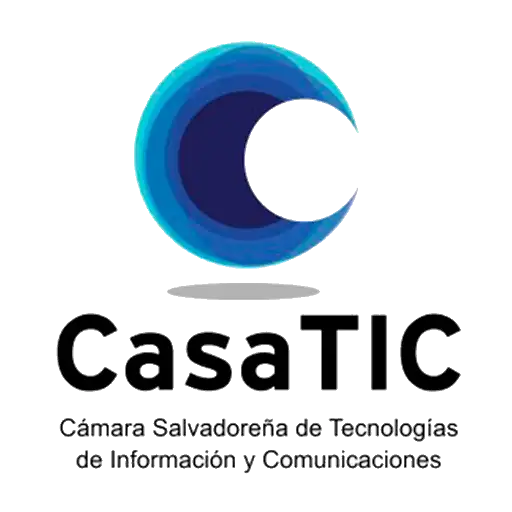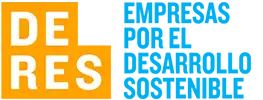-
Who we are
-
-
StrategyMission
To solve the challenges of organizations and communities through intelligent, secure, sustainable, and people-centered solutions, so they generate real value in their social and productive contexts.
VisionTo be the chosen company by organizations seeking to innovate with quality, purpose, and trust in the intelligent era.
Learn moreValues- Ethics and transparency
- Professionalism
- Respect
- Honesty
- Innovation
- Responsibility
- Effectiveness
- Integrity
- Customer orientation
- Punctuality
-
-
-
History
Sofis Solutions was born in 2005, in the city of Montevideo - Uruguay.
Since its inception, the main driver was and remains quality. This applies to processes, products, and relationships with the environment.The internationalization of the company It was one of the founding objectives. In the first stage, it expanded from Uruguay, and in the second stage, it opened offices in Latin American countries. Currently, it has offices in Montevideo, Panama, El Salvador and Ecuador.

-
-
-
Alliances








-
-
-
Certifications

CMMI-DEV-3
More informationNational Quality Award
More informationISO 9001:2015
Quality Management SystemISO 37001:2016
Anti-Bribery Management SystemISO 14001:2015
Environmental Management System
-
-
-
SustainabilityLearn more
Sofis Solutions integrates environmental, social, and governance (ESG) principles into its management and operations, driving sustainability through Digital Transformation. Its strategic approach prioritizes energy efficiency, digital inclusion, and transparency in digital governance, contributing to the responsible development of organizations.

-
-
-
What we do
-
-
IT projectsLearn moreAt our Software Factory, we specialize in providing software development solutions with a focus on excellence and sustainability.
-
-
-
Software qualityOur software quality services comprehensively address the aspects or dimensions of software quality, addressing this approach throughout the entire software development cycle.
- Manual and automated functional suitability testing
- Performance testing
- Software product quality
- Software quality consulting
Learn more
-
-
-
Staff AugmentationLearn moreWhat is IT Staff Augmentation? IT Staff Augmentation is a specialized technical staffing model that enables organizations to increase their agility and respond to the changing technological needs of the market.
-
-
-
ConsultancyIn the public sector, strategic decisions and projects with citizen-centered designs and excellence have the power to transform entire communities.Learn more
-
-
-
BIonA SuiteBIonA Suite is a comprehensive platform for the intelligent management of processes and services in public and private organizations. BIonA Suite facilitates smart transformation with a focus on public value and user experience. Learn more
-
-
-
Projects
-
-
Recent projects
 FOCAL Regional StudyFOCAL - El Salvador
FOCAL Regional StudyFOCAL - El Salvador Single Registry of Uruguayans AbroadMinistry of Foreign Affairs - Uruguay
Single Registry of Uruguayans AbroadMinistry of Foreign Affairs - Uruguay Population and Housing Census 2023National Institute of Statistics - Uruguay
Population and Housing Census 2023National Institute of Statistics - Uruguay
-
-
-
Digital Public InfrastructureWhat are Digital Public Platforms?ProjectsProducts
-
-
-
-
Mobile applicationsWe create hybrid, native, and PWA solutions for devices with Android and iOS operating systems.
Some of our projects:Digital Patrols, Ecuadorian Bovine Information System, Easy Budget UY, Digital Portfolio, SIGES Teachers App, SIGES Parents App.
Learn more
-
-
-
FOCAL regional studyThe purpose of the study was to carry out a regional analysis with the objective of identifying and evaluating the maturity level of the member countries of the Latin American Government Accounting Forum (FOCAL), currently composed of Argentina, Bolivia, Brazil, Chile, Colombia, Costa Rica, Ecuador, El Salvador, Guatemala, Honduras, Mexico, Nicaragua, Panama, Paraguay, Peru, Dominican Republic, Uruguay and Venezuela.Learn more

-
-
- AI
-
-
Artificial IntelligenceLearn moreAdvanced Artificial Intelligence (AI) and Big Data solutions that transform the way organizations make decisions and optimize their operations. We specialize in the development of intelligent autonomous agents and generative AI solutions using large language models (LLMs), both on local infrastructure and in the cloud.
-
- Press Room
-
-
Sustainable development
-
- Innovation
-
-
#GreenSofisMore information
Methodology
#GreenSofisSustainable Digital Transformation Conference
#GreenPath
-
-
-
AI For Everything
It is an initiative by Sofis Solutions, from the Intelligent Solutions Division, that promotes the adoption of artificial intelligence as a key driver of efficiency and effectiveness in the intelligent era.
It integrates both administrative and operational processes, promoting an organizational evolution where technology amplifies knowledge, optimizes decision-making, and generates value in a sustainable and inclusive way.
More information
-
- Contact us
- ES PT-PT
-

Web Accessibility: An Essential, Equitable, and Inclusive Aspect for Everyone
Montevideo, December 3, 2020.
The web is an extremely important resource for many aspects of people’s lives, including job searching, continuous education, commerce, entertainment, health, and more. Therefore, it is essential that the web be accessible and universal so that anyone, regardless of any disability, can access information equitably and with equal opportunities.
Web accessibility plays an important role in society, as its primary goal is to ensure that websites can be used universally by anyone, regardless of any disability, including visual, auditory, physical, cognitive, neurological, and speech impairments. It must provide opportunities for everyone to perceive, understand, navigate, and interact with the web. Accordingly, various international guidelines have been developed to explain how to create accessible websites that provide equitable access to information.
Since 1992, the United Nations General Assembly has declared December 3 as the International Day of Persons with Disabilities, according to resolution 47/3, aiming to promote the human rights and well-being of people with disabilities in all areas of society and development, as well as raise awareness of the challenges they face socially, economically, culturally, and politically.
For 2020, the theme selected by the United Nations is "Participation and Leadership of Persons with Disabilities: 2030 Development Agenda", focusing on empowering people with disabilities to achieve inclusive, equitable, and sustainable development, in line with the 2030 Agenda for Sustainable Development, which commits to "leave no one behind" and considers disability as a cross-cutting issue in implementing and achieving the 17 Sustainable Development Goals (SDGs).
Through the following interview, Lic. Mariana Caffa, Design Lead and Project Coordinator at Sofis Solutions, shares what web accessibility is, the importance of WCAG, and how Sofis Solutions has worked within its sphere of influence on this topic.
What is web accessibility?
It is the ability for web resources to be used satisfactorily by the largest number of people, regardless of personal limitations or environmental constraints. These limitations may include physical, mental, educational, familial, or socio-economic factors.
What is WCAG?
"WCAG stands for Web Content Accessibility Guidelines, created by W3C, an independent international group that defines web protocols and standards."
The accessibility guidelines are based on four key principles: perceivable, operable, understandable, and robust. Specific guidelines and objectives are defined to ensure accessibility.
Each guideline also has concrete and testable requirements called conformance criteria, classified into three levels: A, AA, and AAA, which define the accessibility level of a system."
Why is WCAG important?
"Accessibility not only provides benefits like improved usability, search engine ranking, and content reusability, but is fundamentally a basic element for equal opportunities and non-discrimination.
From my perspective, it is the most important because it guarantees equal access for everyone: older adults, people with disabilities or temporary limitations, low-literacy users, speakers of other languages, new or infrequent users, or people in challenging environments (noisy surroundings, devices with black-and-white screens, outdoors, low bandwidth, no mouse, etc.)."
What has Sofis Solutions done regarding this topic?
"Web accessibility involves several components that must be accessible: accessing a computer or device, which may require personalized technical assistance such as a screen reader or magnifier; the browser, which must be compatible with assistive technologies; and finally, the web content itself. Sofis Solutions, as designers, developers, and editors, are responsible for ensuring accessibility in this last component.
Actions taken include training for company staff, including a course by the Uruguayan Institute of Technical Standards (UNIT), internal knowledge transfer sessions to raise awareness of the importance of accessibility, and ensuring our team understands how to improve website and application accessibility.
There are different phases for evaluating web accessibility. It begins with automated evaluation, the fastest and most objective method using evaluation tools, followed by manual evaluation, where a person assesses issues that cannot be evaluated automatically. Filtering techniques and user testing are also used.
At Sofis Solutions, we generally perform automated evaluations and aim for AA conformance. When possible, we reach this level and validate it with automated tools, as done for the Electronic Agenda System, the INE portal, SIMPLE, and other projects.
We have also worked more deeply on sites like the Uruguayan Postal Portal and SIGES (Salvadoran Educational Management System), going through all evaluation phases. For projects where evaluation is limited, certain accessibility criteria are already incorporated into our design and development processes, applied almost automatically at the design level."
According to World Health Organization (WHO) estimates, over 1 billion people, around 15% of the global population, have some form of disability. Projections indicate this number will increase due to population aging and the growing prevalence of non-communicable diseases. People with disabilities face disadvantages, which vary depending on geography, equity, access to healthcare, education, and employment opportunities.

El pasado 20 de noviembre se llevó a cabo en la Sala Verdi la edición piloto de Burocracia Creativa UY 2025, la antesala local del Creative Bureaucrac......

Between October 14 and 16, 2025, the XI Forum of Government Accounting Offices of Latin America (FOCAL) was held in Santiago, Chile, a regional refere...

Within the framework of the United Nations Global Compact's 2024–2025 strategy, which proposes five transformative changes to accelerate business impa...












 Digital Signature
Digital Signature BionA Suite
BionA Suite Biona SIgn
Biona SIgn






















